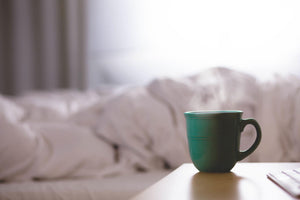Do you like your coffee with an extra kick? Or do you love the flavor of coffee but prefer gentler experiences? Well, you’re in good company – at Peak State, we’re passionate about helping you have the perfect experience for you.
So, in a cup of coffee, how much caffeine are you actually drinking? It’s not always an easy answer. The caffeine content in your cup can depend on a variety of factors – type of beans, if you’re drinking dark or light roast, and how your coffee is prepared and brewed.
In today’s article, we’re shedding some light on how much caffeine is in different types of coffee. Which coffee has the most caffeine, and why? Keep reading to find out.
Type of Bean: Robusta vs Arabica Coffee
Firstly, there are two main species of coffee plants that dominate the market: Robusta and Arabica.

Out of the two, Arabica beans are more popular, and are considered higher-quality beans for their refined, sweet taste. But because the Arabica plant is more sensitive, it’s also expensive to farm and generally reserved for specialty and high-quality coffee.
Robusta beans, on the other hand, are naturally more pest-resistant and thus easier and cheaper to grow. The flavor is earthy and more bitter than Arabica beans, which is why they are considered second-grade coffee. Cheaper commercial and instant coffees usually use Robusta beans.
Aside from the price and flavor, caffeine content is another divider between Arabica and Robusta coffee. On average, Robusta beans contain about twice as much caffeine as Arabica beans do, which is no small difference!
Do Light Roasts Have Less Caffeine?
You might have expected that dark roasts are “stronger” and must be higher in caffeine, but as it turns out, that isn’t true. So let’s shed some light on this, shall we? There are a lot of misconceptions out there about how the process of roasting coffee affects the caffeine content in the beans.

While roasting coffee changes the flavor, the roasting process can actually decrease the caffeine level in the bean. If you compare one dark-roasted bean with one light-roasted bean, the caffeine content in the two can be pretty much equal, or the dark roast will have even less.
When you roast a coffee bean, the structure of the bean changes in two main ways. Because the water inside the bean evaporates in the heat, and since caffeine is water soluble, so goes the caffeine.
How You Measure Your Beans Affects Their Caffeine
Because of this, the amount of caffeine in your cup will differ depending on how you measure your beans when you brew coffee – by weight or scoop.

See, when some of the bean’s mass is lost during roasting, the bean gets lighter. At the same time, the actual volume of the bean expands during roasting, making it larger – kind of like when you pop popcorn.
So if you use a scoop to measure out your beans, then a lighter roast will give a more caffeinated cup. This is because a light roast, which was roasted for a shorter time, has a smaller volume than dark roast, and you can fit more beans into the scoop.
On the other hand, if you measure your beans by weight, then dark roast beans will give a more caffeinated cup. That’s because the longer beans are roasted, the less they weigh, and so it takes more dark roast beans to reach the desired weight than it would light roast beans.
Complicated? Don’t worry. The main thing to know is that while the caffeine content in the beans are unaffected by the roasting process, the structure of the bean changes and this can affect the actual caffeine in your cup. By scoop, light roasts give a more caffeinated cup – by weight, a dark roast has higher caffeine content.
What Brewing Method Makes The Strongest Coffee?
But what about different coffee beverages? Apart from type of bean and the roast, how you prepare your coffee can affect how much caffeine ends up in your cup. Grind size, brewing time, and water temperature are a few factors that make a difference.
But to make it easy, we’ve put together a table specifying the average caffeine content in the most common coffee drinks below.
|
Coffee Beverage |
Serving size |
Caffeine per serving |
Caffeine per fl. oz |
|
Espresso |
1.5 fl oz |
42mg |
|
|
Drip coffee |
8 fl oz |
11.5mg |
|
|
Pressed Coffee |
8 fl oz |
11.8mg |
|
|
Cold Brew |
16 fl oz |
12.5mg |
|
|
Instant Coffee |
8 fl oz |
7.5mg |
|
|
Decaf coffee |
8 fl oz |
0.35mg |
How Much Caffeine Does Decaf Coffee Have?
Decaf coffee is great for those who are sensitive to caffeine, or who want to drink coffee late at night wihout risking precious sleep.
Despite the name, decaf coffee still contains a small amount of caffeine – but since it’s less than 5mg per cup, most people won’t feel any effects at all.
The process of removing caffeine from coffee does leave some traces – but there are certain methods that are better than others. The Swiss Water Process is the only process currently in use that uses only water, instead of chemicals, to remove the caffeine – and it leaves the least amount of caffeine in the beans, too.
Trying to cut back on your caffeine? Check out our decaf blend here.
Conclusion: Which Type of Coffee Has the Most Caffeine?
So, which coffee has the most caffeine? To summarize, Robusta beans have about twice the caffeine content that Arabica beans contain.

Light roasts contain about the same amount or more caffeine per bean compared to dark roasts, especially when you scoop them instead of weigh them, since they are more dense.
The water temperature, brewing time, and grind size when you prepare your coffee also affect how much caffeine ends up in your cup. Higher temperature and pressure extract more caffeine, which is why espresso contains the most caffeine, and generally, instant and drip coffee contain the least amount of caffeine.
And how much coffee should you drink in a day? Studies show that it’s perfectly fine to drink 3–5 cups, or about 400mg of caffeine per day.
Psst… Wondering how you can drink coffee without disrupting your sleep? Check out our science-backed tips here.

